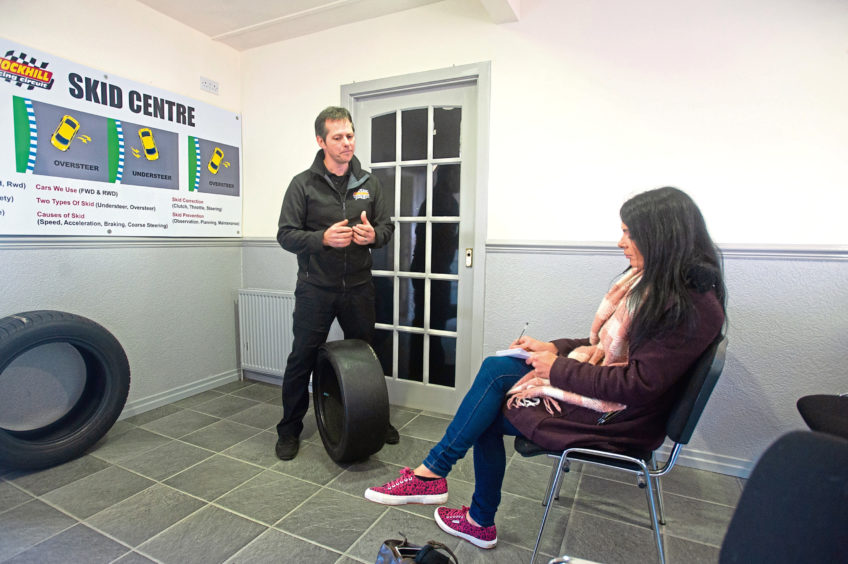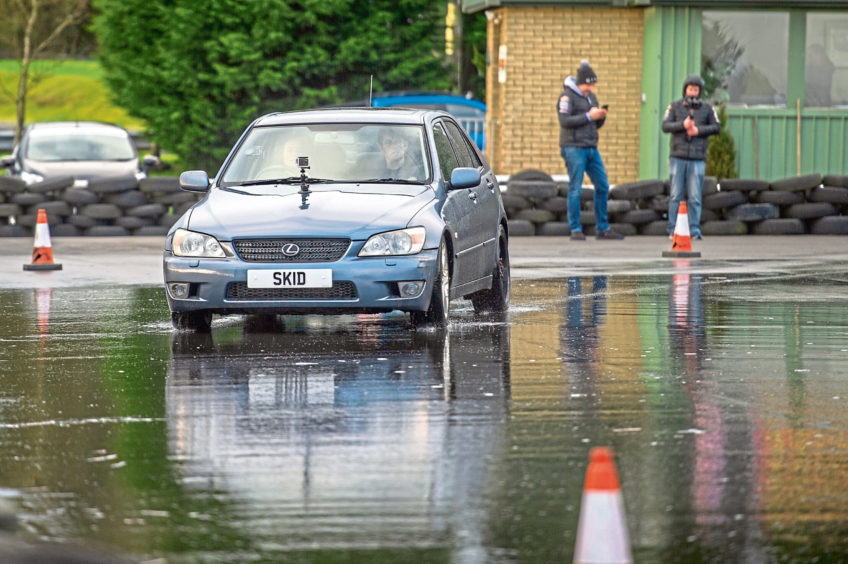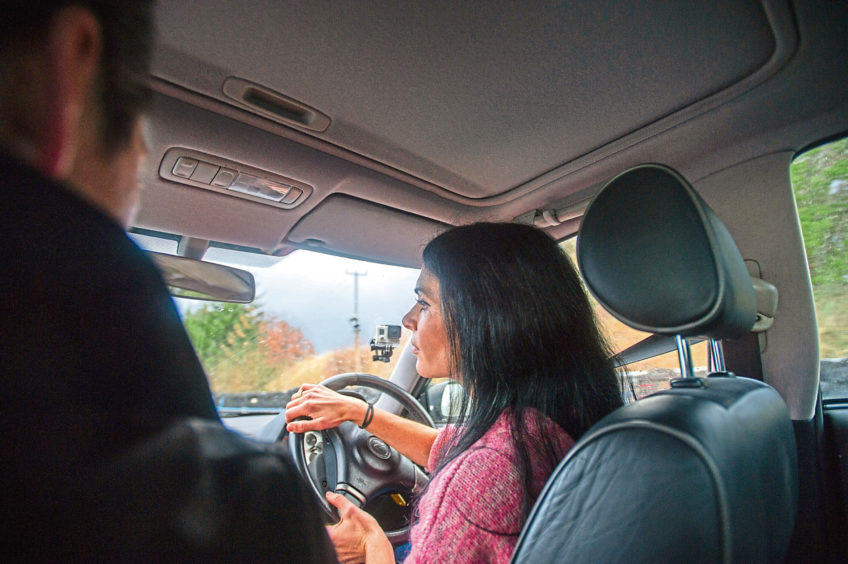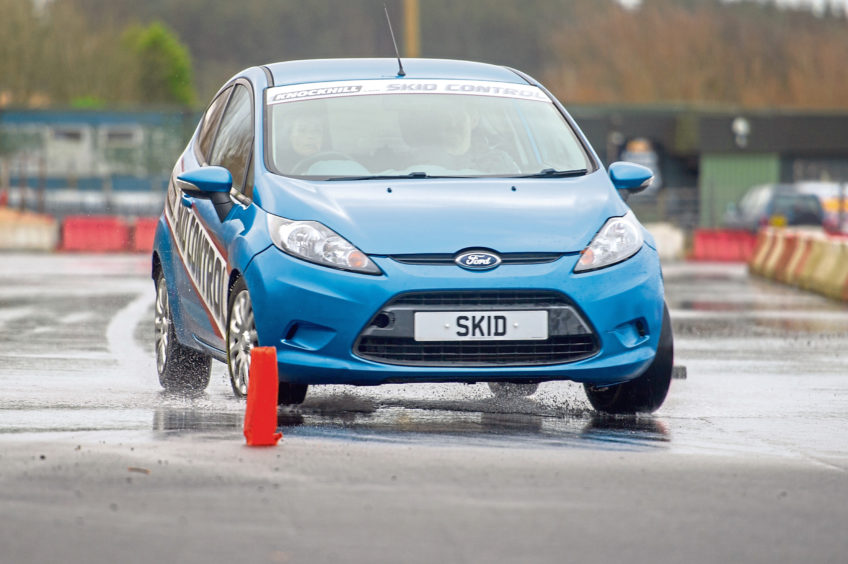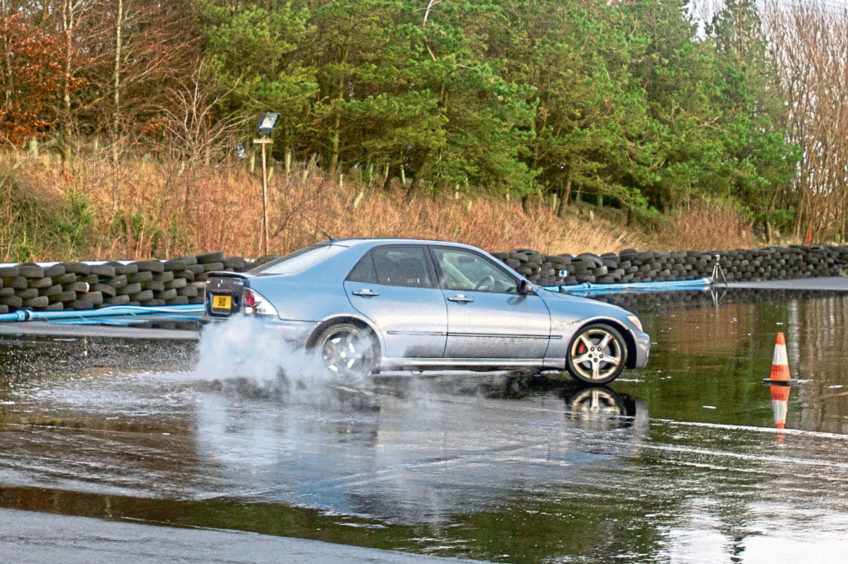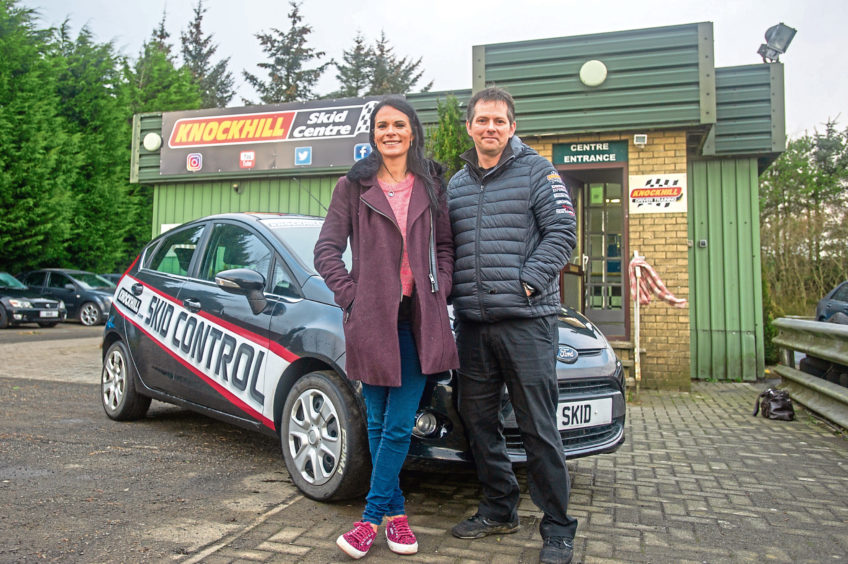As winter bites, drivers face hazardous conditions which increase the risk of skidding and losing control. Gayle heads to Knockhill’s skid control centre to learn some top tips…
Skidding on black ice is a scary, unnerving sensation for most drivers.
Best case scenario, you lose – and then regain control – and, with your heart in your mouth, you drive away relatively unscathed.
Worst case scenario, you completely lose control and go skidding into a tree, wall, vehicle, or, God forbid, a person.
In winter, it’s more likely drivers will face wet, slippery and icy surfaces, increasing the risk of skidding and losing control.
That’s why Knockhill’s skid control centre – a safe, controlled environment where you can practice under the watchful eyes of experienced instructors – is a fantastic place to visit.
The experience on offer is potentially lifesaving and huge amounts of fun, as I discovered one freezing afternoon last week.
After coffee and a chat, senior skid pan instructor Richard Band took me through a briefing where we looked at what causes skids, and how front and rear wheel drives handle them differently.
“If you have a panic reaction to a skid, you can freeze or do the wrong thing, and the situation deteriorates rapidly,” he said.
“We train you how to deal with sticky situations like skids – how to get out of them, and how to avoid them in the first place.
“Many drivers are very protective of their driving and blame mitigating circumstances, whether snow, mud, water or ice on the road.
“But ultimately, the most important element of driving is the driver.”
The skid pan at Knockhill is coated with a smooth and therefore less “grippy” tarmac over which recirculating water creates a slippery surface. It’s meant to simulate ice or snow and is very skid-friendly – especially as the cars here have no tyre treads.
First up, Richard took the wheel of a front-wheel drive Fiesta and demonstrated how to correct a skid. Then it was my turn.
“We’ll only be going around 20, maybe 30mph in second gear,” reassured Richard, as I burled round the track in a figure-of-eight between cones.
After a few shrieks and generous release of profanities, I learned that the sooner and more quickly you deal with a skid, the easier it is to control.
Without getting too technical, one of the most effective ways of catching a skid is to press the clutch in and come off the accelerator. This cuts power to the engine but doesn’t change the balance of the car (and of course, an unbalanced car is a bad thing).
Another technique is to quickly steer out of skid, which in my case, involved unwieldy jazz hands.
What you absolutely must not do is brake, but sadly, that’s what many drivers do when panic kicks in.
“Try not to look at the object you’re skidding towards, perhaps a tree or telegraph pole,” said Richard, as I stared intently at an approaching wall of tyres.
“Your eyes might be drawn there, but instead, try to look where you want to go and then point the car in that direction.”
The next car we put through the mill was a rear-wheel drive Lexus. This was where the fun really began.
As I purposely created a skid (by driving too fast for a corner), we slipped and slid around in an arc, and, amazingly, ended up facing the way I’d planned. What an exhilarating feeling.
The second half of the skid control course took place in a dedicated “brake and avoid” lane.
The first car here was a Fiesta with its electronics disconnected, so no ABS (an anti-locking braking system that keeps the car in contact with the road surface while the driver brakes, preventing wheels from locking and thereby avoiding uncontrollable skids), and no traction control (a system which improves a vehicle’s stability by detecting and reducing loss of traction – in other words, skidding).
It was a pretty wild feeling as I hurtled towards a cone at what Richard described as a “cheeky” speed, and I emergency braked at the very last moment, swerving to avoid it. Okay, I admit it – I hit the thing.
But once Richard showed me how to come off the brake slowly and smoothly, as well as how to steer round – and not into – the cone, I had a lightbulb moment.
The final car of the day was a Fiesta boasting all the usual bells and whistles.
As I braked hard and steered away from the cone with no problem whatsoever, it felt like the car was doing all the work.
The wee Fiesta took me out of the skid and I continued steering in the direction I had planned. Job done.
“Modern day cars are clever and can lull you into a false sense of security, but when things do go wrong, they can go wrong on a major scale, so it’s good to be aware of how to control dodgy situations,” warned Richard.
One important message to take away is that good drivers are smooth drivers.
And while knowing how to handle and recover from a skid is great, avoiding getting into one in the first place is even better.
In essence, it’s about overcoming your instinctive reactions.
It’s a great feeling to be able to take the control back and actually imagine that if faced with a potential skid out on the public roads, you’d be able to deal with it confidently. That’s hugely liberating and confidence-boosting.
In truth, most skids are caused by excessive driver behaviour such as harsh steering, braking or acceleration, or going too fast for the conditions.
My adrenaline was sky high and all thoughts of fear and hunger had been long forgotten as I headed to meet Knockhill events director Stuart Gray at the end of my session.
“Lots of people will drive one way and on auto-pilot but in Scotland we can experience every form of road surface and temperature, so it’s important to be able to adjust your driving to the conditions,” he said. I have to agree.
Safe and happy driving, folks!
info
Fancy experiencing the skid control course at Knockhill yourself? To be in with a chance of winning a two-hour skid control driving experience for one person worth £135, simply email your name, address and phone number to gritchie@thecourier.co.uk with SKIDPAN in the subject line. You must have a full driving licence. knockhill.com
